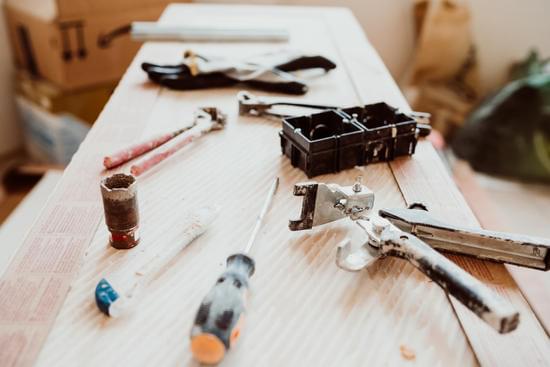Is wood flooring a home improvement that is worth considering? Home improvement projects play a crucial role in maintaining and increasing the value of a home. A key aspect of enhancing the overall appeal and functionality of a property involves selecting the right flooring option. Wood flooring stands out as a popular choice due to its aesthetic appeal, durability, and ability to add value to a home.
When it comes to wood flooring, there are various options available in the market, including hardwood, engineered, and laminate. Each type offers unique characteristics that cater to different preferences and budgets. The versatility and timeless elegance of wood flooring make it a desirable choice for homeowners looking to elevate the look and feel of their space.
In addition to its visual appeal, investing in wood flooring can also have practical benefits. It is essential to consider factors such as cost, installation method (DIY vs. professional), maintenance requirements, eco-friendliness, and its impact on real estate value when deciding whether wood flooring is the right home improvement choice for you. By exploring these considerations comprehensively, you can make an informed decision that aligns with your needs and enhances the overall value of your home.
Benefits of Wood Flooring
Wood flooring is a home improvement that offers a plethora of benefits to homeowners looking to enhance the aesthetic appeal, durability, and overall value of their property. One of the main advantages of wood flooring is its timeless beauty and elegance that can instantly elevate the look of any room.
Whether you prefer the rich warmth of hardwood or the sleek finish of engineered wood, there are options to suit every style and preference. Additionally, wood flooring adds a sense of luxury and sophistication to a home, making it a desirable feature for potential buyers if you ever decide to sell.
In terms of durability, wood flooring is known for its long-lasting quality when properly maintained. Hardwood floors, in particular, can withstand heavy foot traffic and everyday wear and tear without losing their charm.
This makes them a cost-effective choice in the long run as they rarely need replacing compared to other types of flooring materials. With proper care and maintenance, wood flooring can last for decades, making it a worthwhile investment for homeowners looking for a durable and reliable option.
Furthermore, the value that wood flooring adds to a home should not be overlooked. When appraising a property, real estate agents often highlight hardwood floors as a premium feature that can increase the resale value. Potential buyers are willing to pay more for homes with wood flooring due to its aesthetic appeal, durability, and timeless charm. Therefore, installing wood flooring is not only a smart design choice but also an excellent investment that can yield returns in the future.
| Benefits | Details |
|---|---|
| Aesthetic Appeal | Timeless beauty and elegance elevate any room |
| Durability | Long-lasting quality with proper maintenance |
| Value Add | Increases resale value; attractive feature for potential buyers |
Types of Wood Flooring
When considering home improvement projects, one of the key aspects to focus on is the type of flooring used in your home. Wood flooring is a popular choice for many homeowners due to its timeless appeal, durability, and value it adds to a property. There are several options available in the market when it comes to wood flooring, each with its own unique characteristics and benefits.
Here are some of the different types of wood flooring options you can explore for your home:
- Hardwood Flooring: Known for its natural beauty and longevity, hardwood flooring is a classic choice that never goes out of style. It comes in various species such as oak, maple, cherry, and walnut, each with its own distinct grain patterns and colors.
- Engineered Wood Flooring: Made from multiple layers of wood pressed together, engineered wood flooring is a more stable option compared to solid hardwood. It is also suitable for installation in areas with fluctuating humidity levels such as basements.
- Laminate Flooring: While not technically real wood, laminate flooring mimics the look of hardwood at a more affordable price point. It consists of a high-density fiberboard core with a photographic layer that replicates the appearance of wood grain.
Each type of wood flooring has its own advantages and considerations when it comes to installation, maintenance, and overall cost. It is essential to carefully evaluate your preferences and needs before making a decision on which type of wood flooring best suits your home.
Ultimately, investing in wood flooring can truly elevate the aesthetic appeal and value of your home. Whether you opt for the warmth of hardwood, the versatility of engineered wood, or the affordability of laminate, choosing wood flooring as a home improvement project can provide long-lasting benefits for years to come.
Cost Considerations
When considering home improvement projects, one question that often arises is whether wood flooring is a worthwhile investment. The answer to that question is a resounding yes. Wood flooring adds significant value to a home in terms of aesthetics, durability, and overall appeal. Not only does it provide a timeless and elegant look to any space, but it also enhances the resale value of the property.
To better understand the cost considerations associated with wood flooring installation, it is important to break down the expenses involved. Here are some key factors to consider:
- Materials: The cost of wood flooring materials can vary depending on the type of wood chosen. Hardwood floors tend to be more expensive than engineered or laminate options.
- Labor: Hiring professionals for installation will incur labor costs, which can also vary based on the complexity of the project and the expertise of the installers.
- Additional Costs: In addition to materials and labor, there may be other expenses such as underlayment, adhesives, trim work, and furniture removal.
When comparing the cost of wood flooring to other types of flooring options like carpeting or tile, it is important to consider the long-term benefits. While initial installation costs may be higher for wood flooring, its longevity and durability often make it a more cost-effective choice in the long run. Additionally, wood floors require less maintenance compared to carpets, saving both time and money in upkeep.
Overall, while the upfront cost of wood flooring installation may seem daunting, its lasting value and benefits make it a wise investment for any homeowner looking to enhance their living space. From its natural beauty to its sustainability and eco-friendliness, wood flooring truly stands out as a superior option when considering home improvements.
DIY vs Professional Installation
Wood flooring is undoubtedly a popular choice for homeowners looking to enhance the beauty and value of their homes. One of the key decisions that homeowners face when opting for wood flooring is whether to take on the installation as a do-it-yourself (DIY) project or hire professionals for the job. Both options have their pros and cons, which should be carefully considered before making a decision.
One of the primary benefits of DIY installation is cost savings. By tackling the project yourself, you can avoid labor costs associated with hiring professionals. However, it’s essential to keep in mind that installing wood flooring requires precision and expertise.
Mistakes during installation can be costly to fix and may compromise the quality and longevity of your floors. On the other hand, hiring professionals ensures a high-quality installation, reducing the risk of errors and ensuring that your wood flooring looks its best.
In addition to cost considerations, time is also a crucial factor to consider when deciding between DIY and professional installation for wood flooring projects. DIY installations typically take longer due to limited experience and skill level. Professionals, on the other hand, have the expertise to complete the job efficiently and within a shorter timeframe. Homeowners with busy schedules may find that hiring professionals is more convenient and less disruptive to their daily routines.
| Benefits | DIY Installation | Professional Installation |
|---|---|---|
| Cost Savings | Avoid labor costs | High-quality installation |
| Time Efficiency | Takes longer due to limited experience | Efficient completion by experts |
Maintenance and Care Tips
Regular Cleaning Routine
To ensure that your wood flooring maintains its beauty and longevity, it is crucial to establish a regular cleaning routine. Sweeping or vacuuming on a daily basis can prevent dirt and debris from scratching the surface of the wood. Additionally, using a damp mop with a mild cleaner specifically designed for wood floors can help remove stubborn stains without damaging the finish. Avoid using harsh chemicals or excessive water when cleaning, as these can cause warping or discoloration.
Protective Measures
One of the key aspects of caring for wood flooring is taking preventive measures to avoid damage. Placing rugs or mats at entryways can help trap dirt and moisture before they are tracked onto the floor. Felt pads should also be applied to furniture legs to prevent scratches and dents on the wood surface. Furthermore, consider using area rugs in high-traffic areas to minimize wear and tear on the flooring.
Regular Maintenance
In addition to regular cleaning, periodic maintenance is essential for preserving the beauty of wood flooring. This includes inspecting the floors for any signs of wear, such as scratches, dents, or fading finish. Reapply protective coatings or sealants as needed to maintain the integrity of the wood. It is recommended to consult with flooring professionals for deep cleaning and refinishing services every few years to keep your wood floors looking their best.
Wood flooring is more than just an aesthetic choice – it
Eco-Friendly Aspects
When considering home improvements, it is important to also take into account the environmental impact of the materials chosen. Wood flooring is a popular choice for those looking to incorporate eco-friendly elements into their home. One of the main reasons for this is that wood is a renewable resource, unlike other flooring materials like vinyl or carpet that are made from non-renewable resources. By choosing wood flooring, homeowners can contribute to sustainable practices and reduce their carbon footprint.
Benefits of Choosing Sustainable Wood Flooring
In addition to being a renewable resource, sustainable wood flooring offers many benefits in terms of indoor air quality. Unlike carpets that can trap dust, allergens, and toxins, wood floors are easy to clean and do not harbor harmful particles. This makes them an ideal choice for those with allergies or respiratory issues. Furthermore, wood flooring has natural thermal properties that can help regulate indoor temperatures and reduce energy consumption.
Environmental Certifications and Labels
For homeowners looking to ensure that their wood flooring is sourced ethically and sustainably, there are environmental certifications and labels to look out for. The Forest Stewardship Council (FSC) certification guarantees that the wood used in the flooring comes from responsibly managed forests.
Another label to consider is the FloorScore certification, which indicates that the flooring meets strict indoor air quality standards. By choosing wood flooring with these certifications, homeowners can feel confident that they are making an environmentally conscious decision when it comes to home improvement.
Real Estate Value
Wood flooring is not only a beautiful addition to a home but can also significantly impact the resale value of a property. Potential buyers are often drawn to homes with wood flooring for its timeless and elegant look, as well as its durability and low maintenance requirements. Real estate experts agree that investing in wood flooring can make a home more appealing to prospective buyers, ultimately leading to a higher resale value.
When it comes to selling a home, first impressions matter. Wood flooring instantly elevates the aesthetic of a space, creating a sense of warmth and sophistication that can leave a lasting impression on potential buyers.
Additionally, wood flooring is known for its longevity and ability to withstand wear and tear, making it an attractive feature for those looking for a low-maintenance option that will stand the test of time. This perception of quality and durability can translate into increased perceived value by potential buyers.
In today’s competitive real estate market, having wood flooring can give sellers an edge over other properties without this desirable feature. Homes with wood flooring tend to sell faster and at higher prices than those with carpet or laminate flooring.
This is because buyers are willing to pay more for a home that already has the upscale feature of wood flooring, saving them the time and expense of having to install it themselves after purchasing the property. Ultimately, investing in wood flooring is not just about enhancing the beauty of your home; it’s also about making a smart investment in increasing its resale value.
Conclusion
Wood flooring is undeniably a valuable home improvement investment that not only enhances the aesthetics of a space but also adds lasting value to the property. As discussed throughout this article, the benefits of wood flooring are numerous, ranging from its timeless appeal to its durability and sustainability. By opting for wood flooring, homeowners can elevate the look and feel of their interior spaces while enjoying a flooring option that is not only long-lasting but also eco-friendly.
One of the key takeaways from this discussion is the importance of considering wood flooring as a smart choice when it comes to home improvement projects. Whether it’s hardwood, engineered, or laminate options, each type brings its own unique charm and benefits to any home. From the warm ambiance created by hardwood floors to the practicality and affordability of laminate, there is a wood flooring option suitable for every homeowner’s needs and preferences.
In conclusion, investing in wood flooring is more than just a cosmetic upgrade – it is an investment in the future value and appeal of your home. By choosing wood flooring, homeowners can enjoy a long-lasting and sustainable flooring solution that not only adds beauty to their living space but also increases resale value.
With proper maintenance and care, wood flooring can truly stand the test of time, making it a home improvement worth considering for anyone looking to elevate their living environment.
Frequently Asked Questions
Is It Worth It to Put Hardwood Floors in House?
Hardwood floors can add significant value to a home, both aesthetically and financially. They are durable, timeless, and can last for decades with proper maintenance. While hardwood floors may require a higher upfront cost compared to other flooring options, many homeowners believe the investment is worth it in the long run.
Is Wooden Flooring Good for Home?
Wooden flooring is often considered a good choice for homes due to its natural beauty, durability, and easy maintenance. Wood floors can create a warm and inviting atmosphere in any room while also adding value to the property. Additionally, wooden flooring is versatile and can complement various interior design styles.
What Percentage of People Prefer Wood Flooring in a Home?
It is difficult to pinpoint an exact percentage of people who prefer wood flooring in their homes since preferences can vary greatly depending on factors such as location, demographics, and personal taste. However, wood flooring remains a popular choice among homeowners for its classic appeal and potential for increasing property value.
Through market research studies or surveys conducted in specific regions, percentages of people who prefer wood flooring could be determined more accurately based on relevant data analysis.

I’m thrilled to have you here as a part of the Remodeling Top community. This is where my journey as an architect and remodeling enthusiast intersects with your passion for transforming houses into dream homes.





